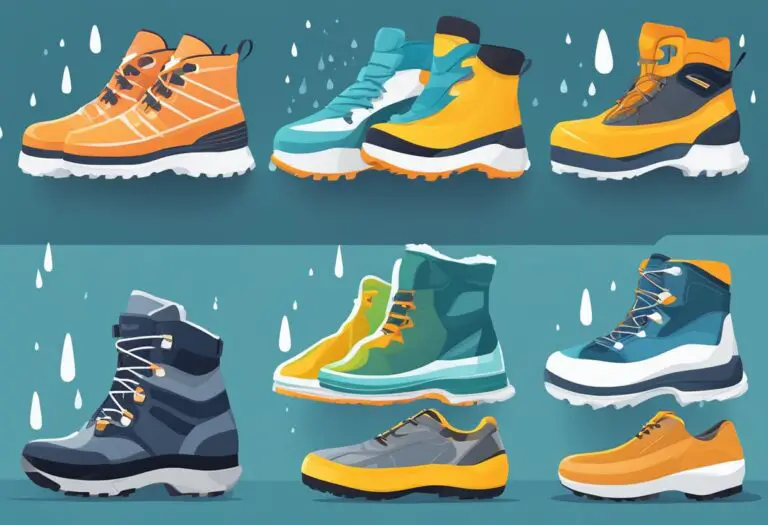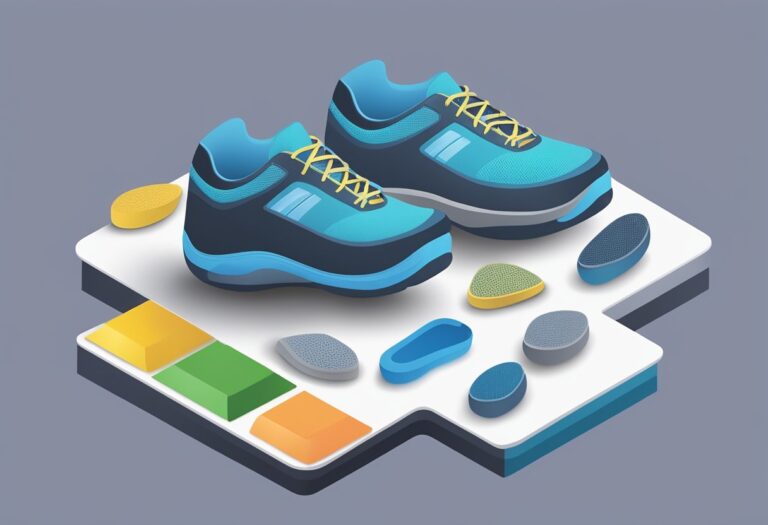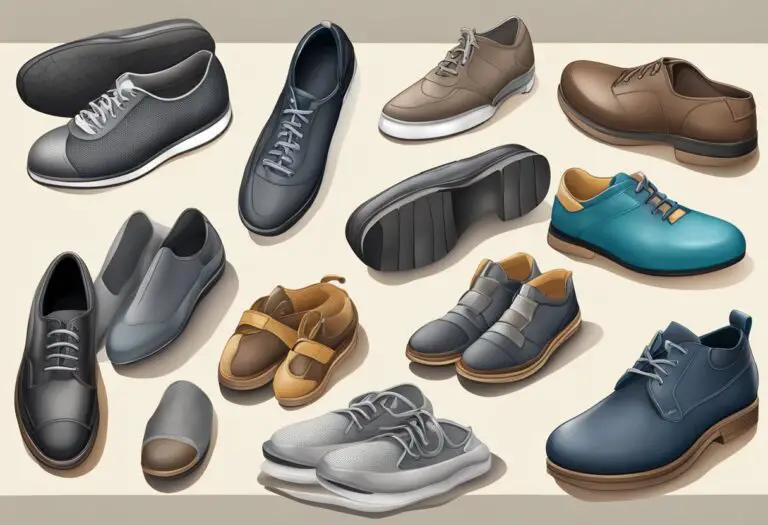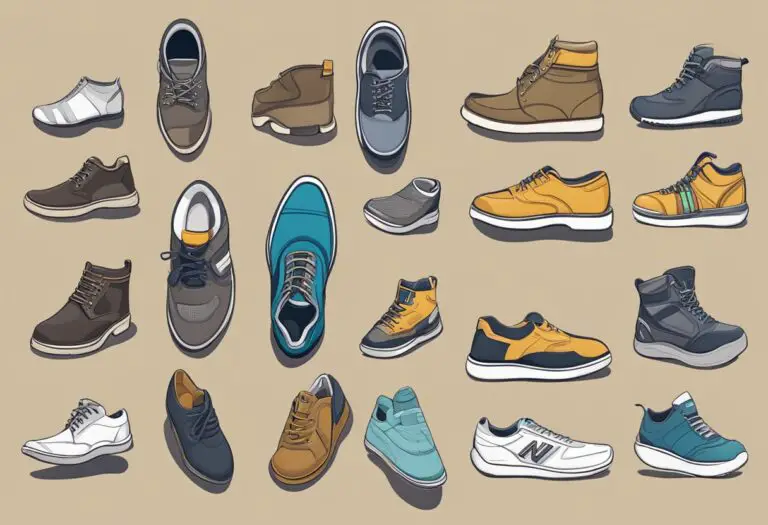How do I select shoes that accommodate orthotic inserts or custom insoles?
Selecting Shoes for Orthotic Inserts or Custom Insoles: A Guide
When it comes to finding the right shoes that accommodate orthotic inserts or custom insoles, there are a few factors to consider. Orthotic inserts and custom insoles are designed to provide additional support and cushioning to the feet, which can help alleviate pain and discomfort caused by various foot conditions. However, not all shoes are suitable for these inserts, and choosing the wrong pair can lead to further discomfort and even injury.

One of the most important factors to consider when selecting shoes for orthotic inserts or custom insoles is the fit. Shoes that are too tight or too loose can cause the inserts to shift or slip, which can be both uncomfortable and ineffective. It is essential to choose shoes that fit well and provide enough room for the inserts to sit comfortably.
Another factor to consider is the type of shoe. Different shoe styles provide varying levels of support and cushioning, and some may be more suitable for orthotic inserts than others. For example, running shoes are designed to absorb impact and provide cushioning, making them a good choice for those with foot pain. On the other hand, high heels and sandals may not provide enough support for orthotic inserts and should be avoided.
Understanding Orthotic Inserts and Insoles

Orthotic inserts and custom insoles are designed to provide additional support and cushioning to the feet, helping to alleviate pain and discomfort caused by various foot conditions. These inserts are commonly used by individuals with flat feet, plantar fasciitis, and other foot-related problems.
Types of Orthotic Inserts
There are several types of orthotic inserts available, each designed to address different foot issues. Some of the most common types include:
- Arch support inserts: These inserts are designed to provide support to the arch of the foot, helping to alleviate pain and discomfort caused by flat feet or fallen arches.
- Heel cups: Heel cups are designed to provide cushioning and support to the heel of the foot, helping to reduce pain caused by conditions such as plantar fasciitis.
- Full-length insoles: Full-length insoles provide cushioning and support to the entire foot, helping to reduce pressure and alleviate pain caused by a variety of foot conditions.
Benefits of Custom Insoles
Custom insoles are designed to fit the unique shape and size of an individual’s foot, providing optimal support and comfort. Some of the benefits of using custom insoles include:
- Improved comfort: Custom insoles are designed to fit the individual’s foot, providing optimal support and cushioning.
- Reduced pain: Custom insoles can help to alleviate pain caused by a variety of foot conditions, including plantar fasciitis and flat feet.
- Improved performance: Custom insoles can help to improve balance and stability, allowing individuals to perform better during physical activities.
When selecting shoes that accommodate orthotic inserts or custom insoles, it is important to choose shoes that have enough depth to accommodate the additional height of the inserts. It is also important to choose shoes that provide adequate support and cushioning to the feet.
Key Features of Shoes for Orthotics

When selecting shoes that accommodate orthotic inserts or custom insoles, there are a few key features to consider. These features can help ensure a comfortable fit and proper support for your feet.
Shoe Depth and Volume
Shoe depth and volume are important considerations when selecting shoes for orthotics. Shoes with a deeper and more spacious toe box can accommodate orthotics and custom insoles, providing ample room for your feet and the inserts. It is important to ensure that the shoes are not too tight or narrow, as this can cause discomfort and make it difficult to wear orthotics.
Removable Insoles and Linings
Shoes with removable insoles and linings are ideal for orthotics wearers. This feature allows you to remove the existing insoles and replace them with your custom orthotics. It also provides additional space and flexibility for your feet. When selecting shoes with removable insoles and linings, make sure that they are easy to remove and replace.
Heel Counter and Stability
Shoes with a sturdy heel counter and good stability are essential for orthotics wearers. The heel counter provides support and helps keep your foot in place, while stability features prevent excessive movement and help distribute weight evenly. Look for shoes with a firm heel counter and a stable sole to ensure proper support for your feet.
Overall, selecting shoes for orthotics requires careful consideration of the features and fit. With the right shoes, you can enjoy comfortable and supportive footwear that accommodates your custom orthotics or insoles.
Fitting and Sizing Considerations

Measuring Your Feet
Before selecting shoes that accommodate orthotic inserts or custom insoles, it is essential to measure your feet correctly. It is recommended to measure your feet at the end of the day when they are at their largest.
To measure your feet, place a piece of paper on the floor and stand on it with your heel against the wall. Mark the furthest point of your foot and measure the distance from the mark to the wall. Repeat the process with the other foot as well.
It is important to note that foot size can change over time. Therefore, it is recommended to measure your feet periodically to ensure that you are wearing the correct size.
Trying on Shoes with Orthotics
When trying on shoes with orthotic inserts or custom insoles, it is essential to wear them during the fitting process to ensure a proper fit. It is also recommended to bring the orthotics or insoles with you to the store to test the shoes’ fit properly.
It is important to look for shoes that have a removable insole to accommodate the orthotics or insoles. The shoes should also have a deep and wide toe box to provide enough room for the orthotics or insoles.
It is also recommended to walk around in the shoes and test their comfort level. The shoes should not be too tight or too loose and should provide enough support for the feet.
In conclusion, selecting shoes that accommodate orthotic inserts or custom insoles requires careful consideration of fitting and sizing. By measuring your feet correctly and trying on shoes with orthotics, you can ensure a comfortable and proper fit.
Care and Maintenance of Orthotic-Friendly Shoes
When it comes to orthotic-friendly shoes, it is important to take proper care and maintenance to ensure their longevity and effectiveness. Here are some tips to keep your shoes in top condition:
Cleaning
Regular cleaning of your orthotic-friendly shoes is essential to keep them free from dirt and grime. You can use a soft-bristled brush or a damp cloth to clean the shoes. Avoid using harsh chemicals or abrasive materials that may damage the shoe’s surface.
Drying
After cleaning, it is important to dry the shoes properly. You can stuff them with newspapers or use a shoe tree to maintain their shape and allow them to dry naturally. Avoid exposing them to direct sunlight or high temperatures, as this may cause the material to crack or fade.
Storage
Proper storage of orthotic-friendly shoes is also important to maintain their shape and prevent damage. Store them in a cool, dry place away from direct sunlight and moisture. You can also use shoe bags or boxes to protect them from dust and dirt.
Insole Replacement
Orthotic inserts or custom insoles may need to be replaced periodically to maintain their effectiveness. Check the manufacturer’s recommendations for replacement intervals and follow them accordingly.
By following these simple care and maintenance tips, you can ensure that your orthotic-friendly shoes provide you with the support and comfort you need for a long time.







